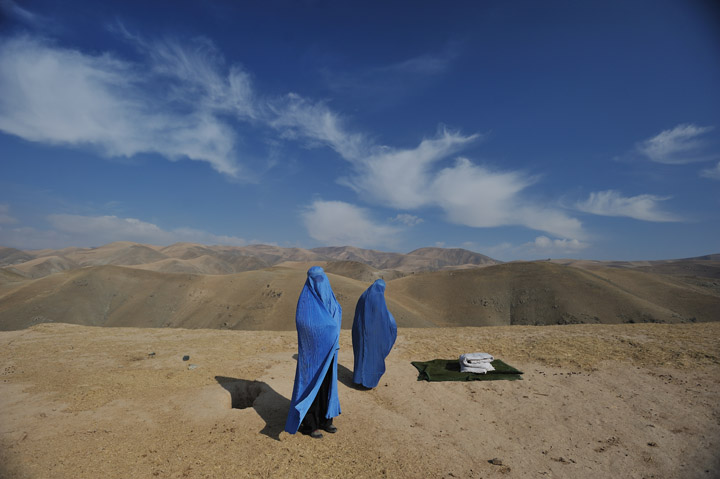For my creative experiential exercise, I documented the nature of a small town, adjacent to the city I live in. The small town of Russell, Massachusetts is not often talked about. However, within this tiny hill town lie magnificent locations that are beautiful. Throughout the day, I traveled from location to location capturing different views. I took images of different aspects of nature, for example, waterfalls, a thawing lake, and an overlook of Springfield from atop a mountain. Here are some of the images from my shoot. I hope you enjoy and realize the beauty of rural Western Mass. I tried conveying the beauty of the small town.

All photo's by: Louis Scarfo
Images taken in Russell, MA
My definition of photojournalism has definitely change in some form. Early on I broke the word into two words, photo and journalism. However, now I understand more in depth what photojournalism truly is, and how much there actually is that goes along with it. Photojournalism is the unbiased representation of events for some sort of news platform. It is very important to understand the history of photojournalism because the technology we possess today is very much taken for granted. The sheer ability to point, focus, and snap an image with a smart phone is simply amazing in comparison to the wet collodion process.
A big breakthrough for myself during this course occurred when talking about technology. In the past ten years or so, technology has aided the field of photography and photojournalism alike. Freelancers and photojournalists can upload their images via the internet or apps and have their content published within minutes. It is simply amazing compared to the transmitters that were used in the 1900’s. I had another “ah-ha” moments when I began learning about drones and their use for war photography. Drones could reduce the deaths of photojournalist caught up in war stricken countries. They may also in fact get a better image with even less stress or harm on the photojournalist. With this said, I do believe photographs change the world. For example without Robert Cappa’s images, World War 2 may not have been visualized by many. Many images from September 11 capture the terror that occurred on that dark day. There are many other images that have shaped the world as well.
A big breakthrough for myself during this course occurred when talking about technology. In the past ten years or so, technology has aided the field of photography and photojournalism alike. Freelancers and photojournalists can upload their images via the internet or apps and have their content published within minutes. It is simply amazing compared to the transmitters that were used in the 1900’s. I had another “ah-ha” moments when I began learning about drones and their use for war photography. Drones could reduce the deaths of photojournalist caught up in war stricken countries. They may also in fact get a better image with even less stress or harm on the photojournalist. With this said, I do believe photographs change the world. For example without Robert Cappa’s images, World War 2 may not have been visualized by many. Many images from September 11 capture the terror that occurred on that dark day. There are many other images that have shaped the world as well.
Photo by: Robert Capa
Image source: http://www.skylighters.org/photos/robertcapa.html
Photo by: Sara Schwittek
I believe that my experiential exercise was driven by the ability to capture quality images via my cell phone. I was able to capture the beauty of nature from a device I use everyday. I can also convey these images to a wide variety of viewers through social media and text or emails alike. Photographers in the 1800’s could not have taken the images I did, with the ease that it took due to lack of technology. People do not truly realize how much that they can accomplish with images, especially when they can capture them on their cell phone. Prior to my enrollment in this class, I too took my capability to convey images to an audience for granted. However, now after studying the topic, I truly understand the importance and power that photojournalism possesses.
Photojournalists go extremely in depth in whatever they are trying to capture. For example, in Luke Allen’s blog post, Andrew Burton takes photographs of inmates in their everyday activities, something not many understand or can connect to. Female photojournalists have always been oppressed. As Kelly states in her blog post, “she impacted society by showing women they can do whatever they want”. Ruth Orkin did in fact give women an opportunity to go out and “get their own” with her photography. Lynsey Addario is yet another female that has shaped the industry of photojournalism. As Sirjana mentions in her presentation, the American Photo Magazine named her “One of the five most influential photographers of the past 25 years”.
Photojournalists go extremely in depth in whatever they are trying to capture. For example, in Luke Allen’s blog post, Andrew Burton takes photographs of inmates in their everyday activities, something not many understand or can connect to. Female photojournalists have always been oppressed. As Kelly states in her blog post, “she impacted society by showing women they can do whatever they want”. Ruth Orkin did in fact give women an opportunity to go out and “get their own” with her photography. Lynsey Addario is yet another female that has shaped the industry of photojournalism. As Sirjana mentions in her presentation, the American Photo Magazine named her “One of the five most influential photographers of the past 25 years”.
Photo by: Andrew Burton
Image source: https://prisonphotography.org/tag/andrew-burton/
Photo by: Ruth Orkin
Image Source: http://www.orkinphoto.com/photographs/new-york/
Photo by: Lynsey Addario
Image source: http://www.lynseyaddario.com/
























